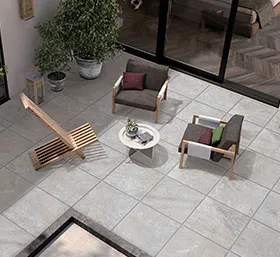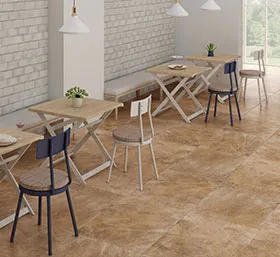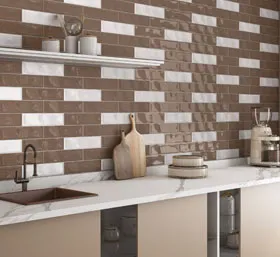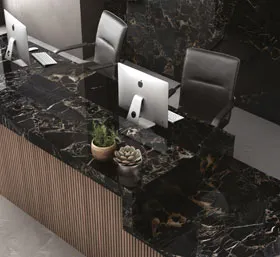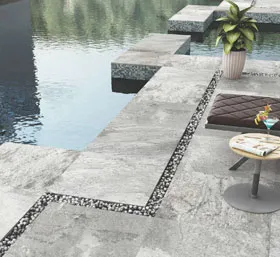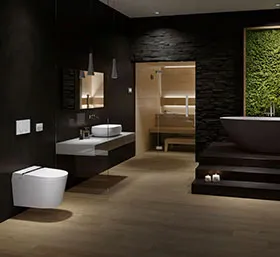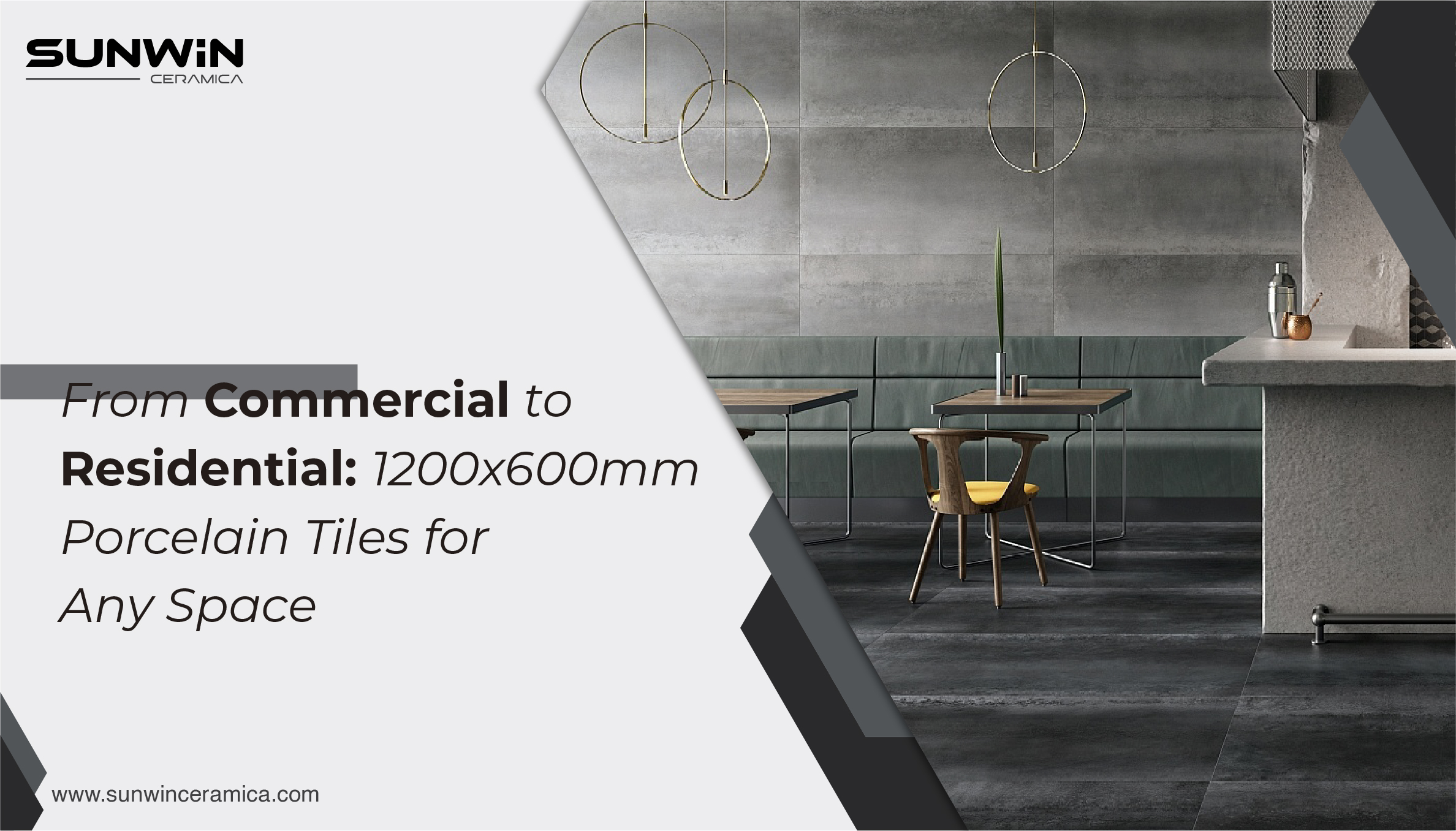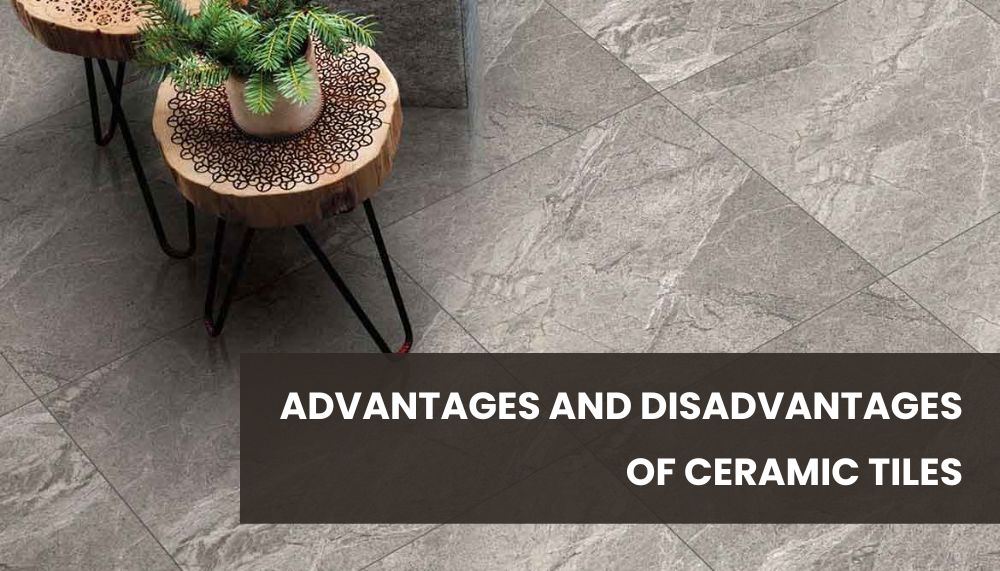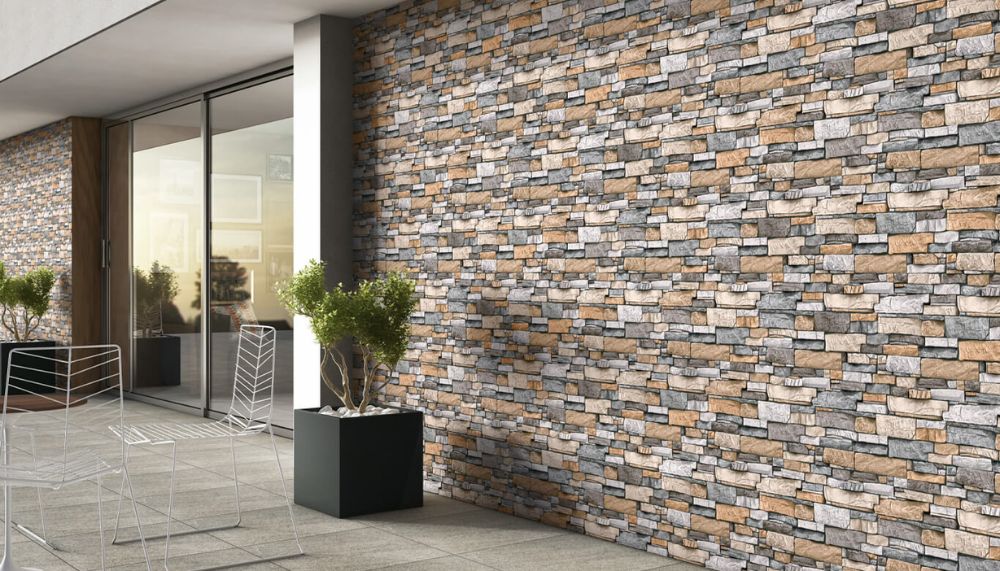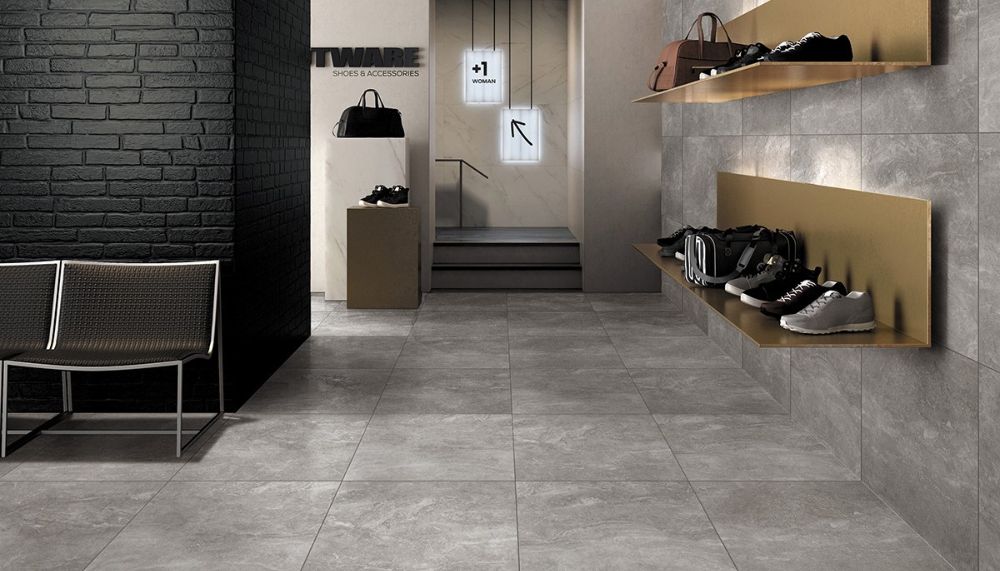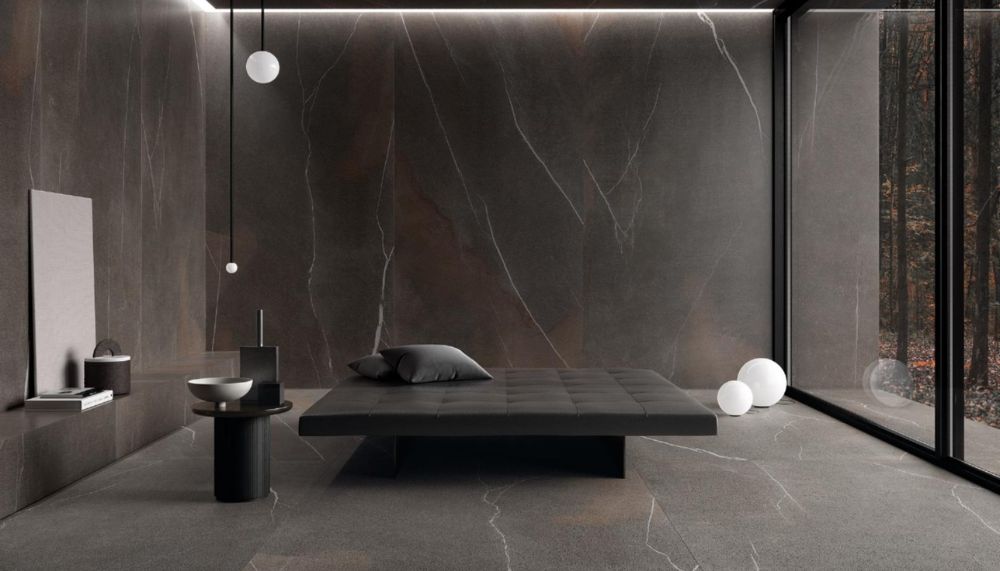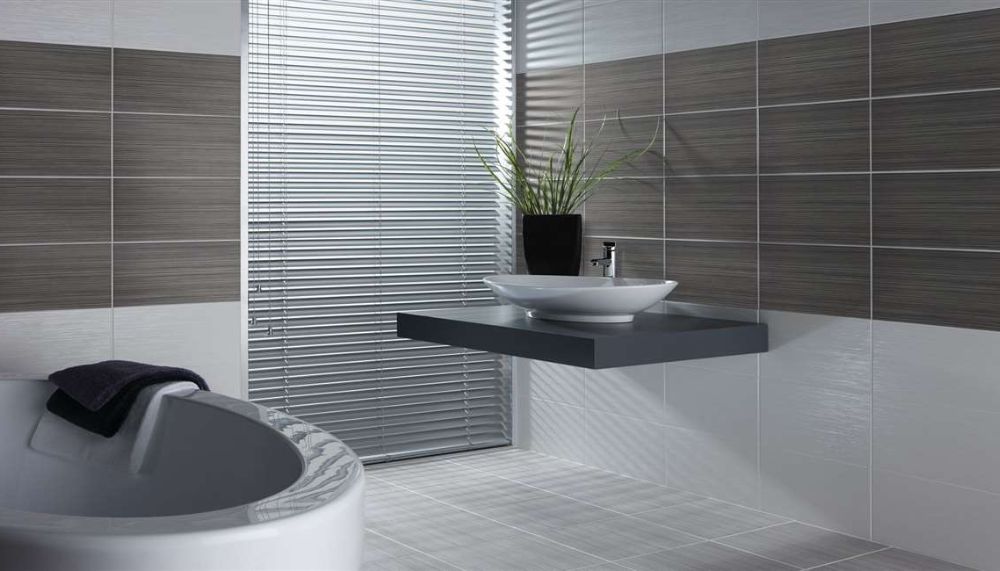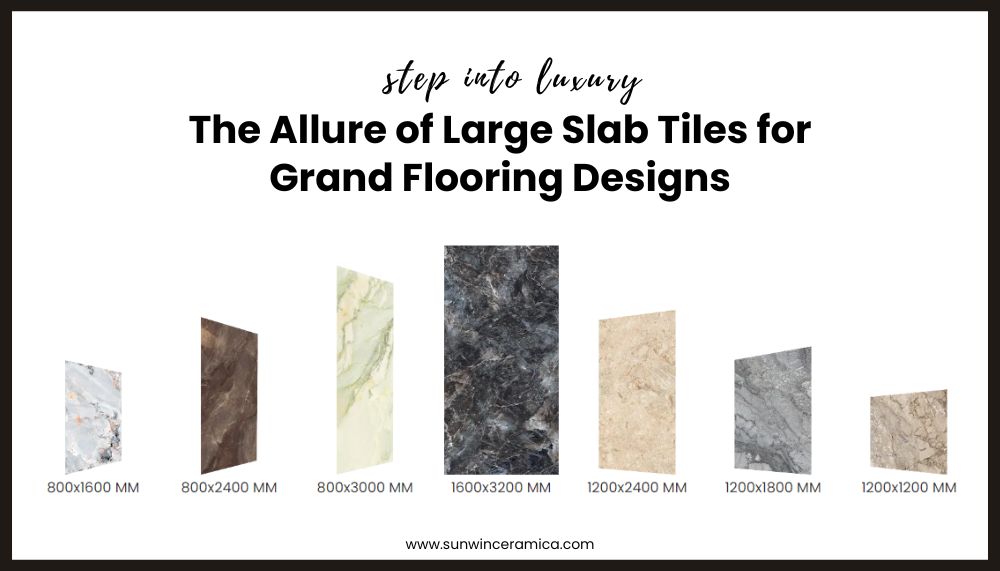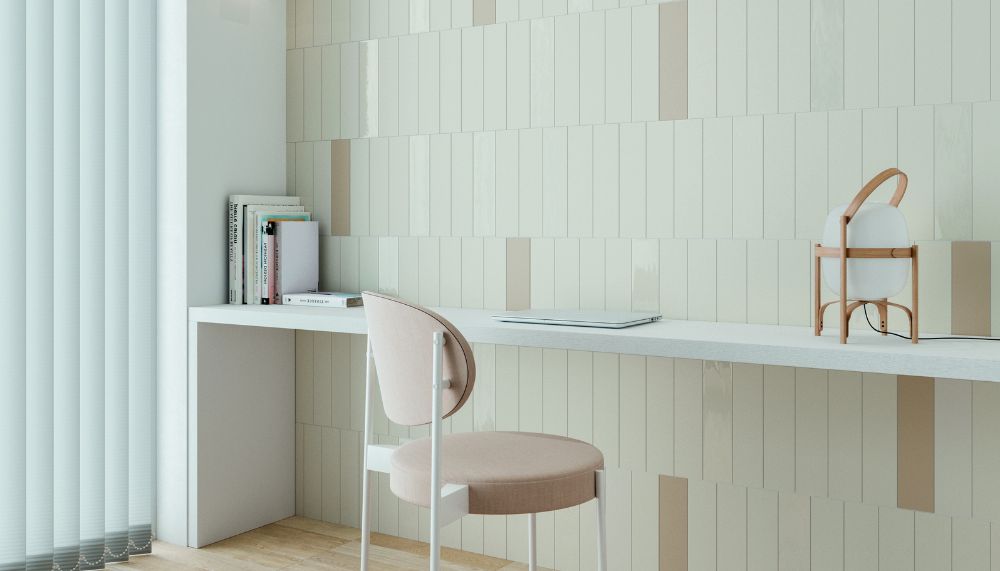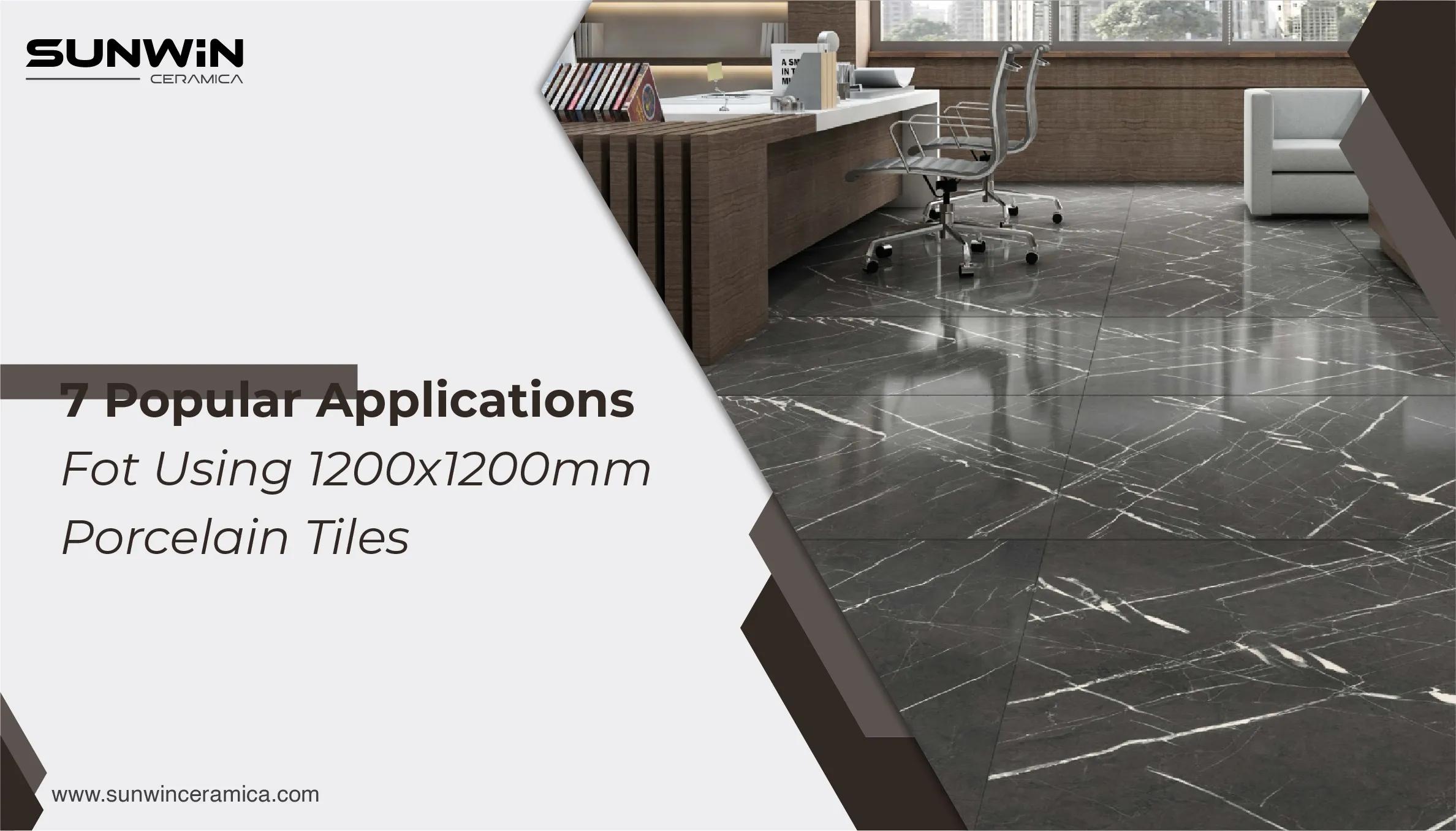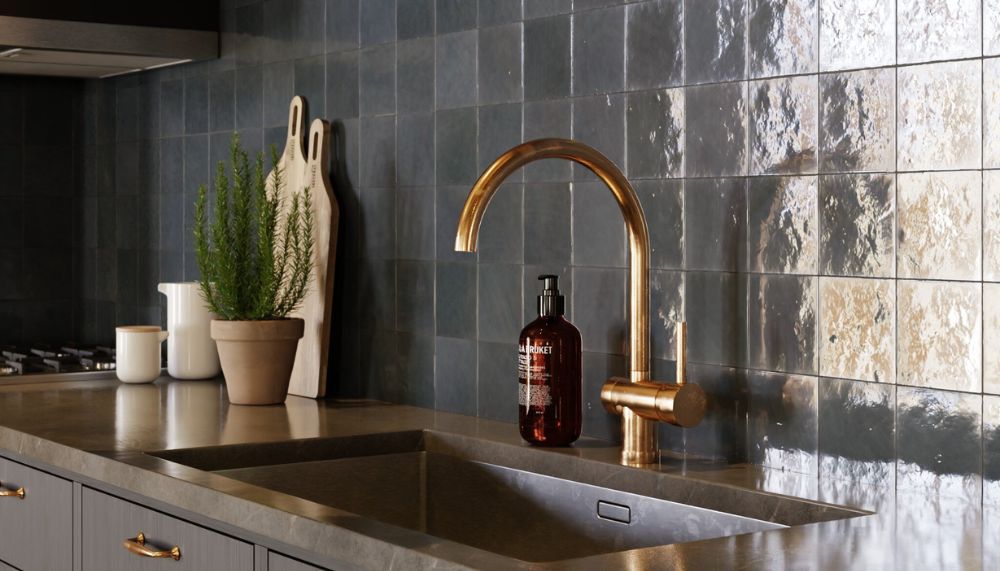
Metro tile is the common name used for classic subway tiles that are originally manufactured for subway stations. But later on, their elegant designs and timeless beauty made their way into the residential spaces. Since then these tiles have become a popular choice for homeowners who are looking for a unique and versatile decor option. Its simple but stylish look flawlessly complements each and every space.
Metro tiles offer a diverse selection of layouts and patterns, providing unique opportunities to revamp your living area. They cover a wide spectrum of designs starting from classic to modern, and minimalist to vibrant. We have picked some of the popular and creative design ideas that will build a mesmerizing appearance for your interior.
Creative Metro Tile Patterns To Transform Your Space
1. Brick Bond
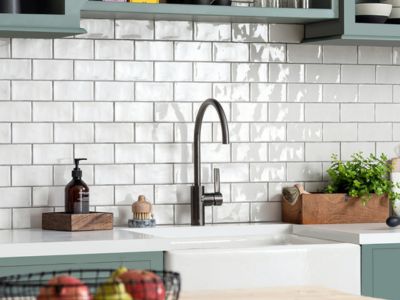
Brick bond is a wonderful pattern that involves the horizontal stacking of metro tiles similar to bricks laid on a wall. The linear arrangement with regular offsets creates a stunning staggered appearance. It channelizes the feel of vintage homes with a rustic appeal.
The brick bond pattern is also very easy to install due to its simplicity. It is a straightforward layout and doesn't require intricate cuts or angles. A classic brick bond goes well with white metro tiles but you can choose according to your preference.
2. Herringbone
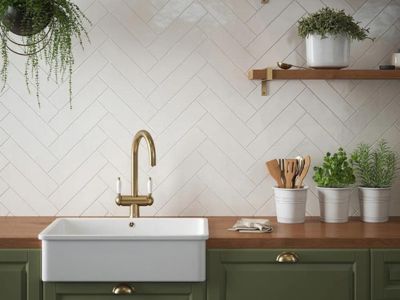
The herringbone pattern merges classic charm with a twist. Subway tiles, laid at alternating 45-degree angles create a dynamic V-shaped zigzag effect. This arrangement injects visual interest and depth into any space. It fosters a timeless yet captivating aesthetic. The pattern also seamlessly complements both modern and traditional interiors.
The classic placement of tiles adds a touch of vintage decor while enhancing the overall ambience. Its enduring appeal lies in its ability to infuse character and style into any room. Hence it is one of the most popular choices for those seeking a balance between elegance and contemporary flair in their tile installations.
3. Basketweave
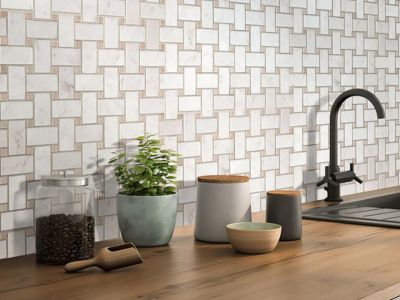
Arranging metro tiles in a basketweave pattern creates a distinctive texture and depth resembling a woven basket structure, adding a refined touch to any space. This fascinating design is a true example of beauty within complexity.
In this intricate pattern, rectangular tiles are arranged at right angles to create a classic appearance that resembles a basket. They undoubtedly offer a visually interesting and timeless look to any space. Try different finishes such as glossy, matt, or textured for a customised appeal. You can also opt for a monochromatic white metro tile palette to achieve a clean and cohesive look, or choose contrasting colours to create a bold statement.
4. Diagonal
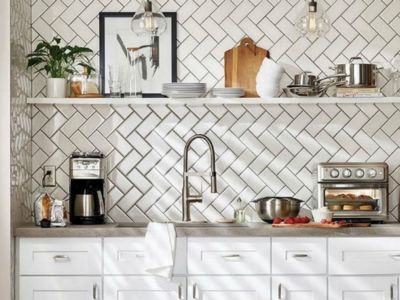
Laying subway tiles in a diagonal grid pattern infuses spaces with a dynamic and contemporary allure. This technique involves positioning the tiles at a 45-degree angle to the walls, forming a visually captivating grid. The diagonal arrangement adds an unexpected twist to traditional tile layouts, imbuing rooms with a sense of movement and energy.
It creates visual interest by breaking away from the typical horizontal and vertical orientations, making the design visually engaging from every angle. This innovative approach offers a modern interpretation of tile installation, elevating interiors with its unique geometric pattern and sophisticated charm.
5. Stacked Bond
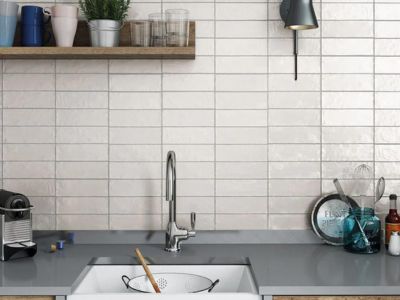
The stacked Bond pattern is a contemporary and stylish arrangement of metro tiles. It includes the horizontal positioning of tiles in a straight line to create a continuous and minimalist look. The uniform appearance of this pattern is the key factor for the elegant design.
The stacked bond pattern promotes a design that creates a feeling of a spacious and more comfortable atmosphere. When these tiles are arranged vertically along the wall creates a visual illusion of big and open space. Therefore this design is particularly beneficial for homes having a low ceiling or limited height.
6. Windmill
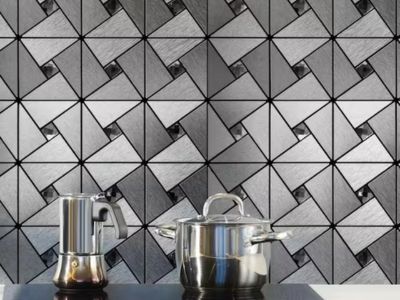
Windmill patterns create an attractive pinwheel effect. The pattern is a unique and visually appealing pattern that features 4 rectangular metro tiles arranged in a square with one small square tile in the centre. The windmill pattern offers a unique and dynamic look that can serve as a focal point in various areas of your home.
This pattern works well on backsplashes, or feature walls, adding a sense of energy and geometric appeal to the space. One of the advantages of the Windmill pattern is its ability to create a visually striking design with a sense of movement. The pinwheel effect draws the eye and adds a dynamic element to the room. It can instantly elevate the overall aesthetic and become a conversation piece in your home.
7. Chevron
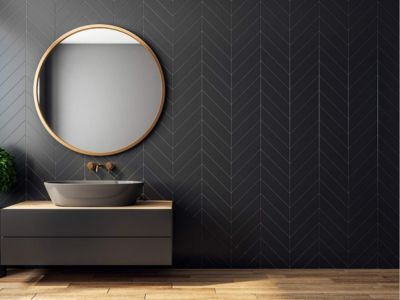
Chevron is one of the most alluring patterns listed in our blog. It creates a striking visual spot with its unbeatable design arrangement of metro tiles. The tiles create a seamless and continuous flow with sharp and clean lines.
Their positioning is pretty similar to herringbone as they also follow the zigzag outline. But here the tiles are cut at an angle and installed with each tile meeting the next at a precise point to form the continuous V-shaped pattern that extends throughout the installation area. With Chevron, you can deploy contrasting and bold colours to form a vibrant environment.
8. Crosshatch
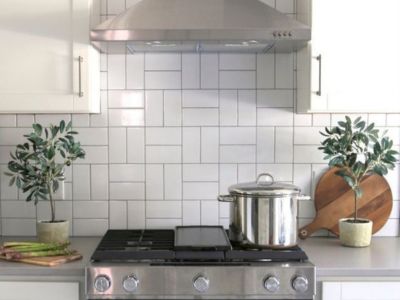
The crosshatch pattern with metro tiles is a design masterpiece that involves an interlocking pattern at 90 degrees to form a crisscross effect. With this pattern, subway tiles are arranged in a grid-like style and create a visually overlapping effect in the space. Therefore it is one of the geometrically unique and captivating designs.
It offers a contemporary appeal with elegant textures and a sense of depth and integrity. This can be particularly effective in smaller areas, as it adds visual interest without overwhelming the space.
9. Offset Brick Bond
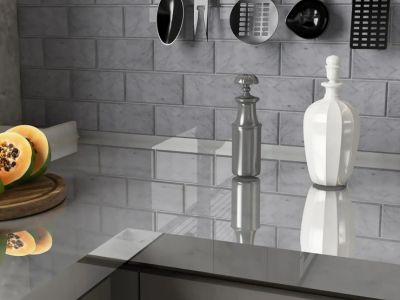
The offset brick bond pattern presents a contemporary twist on a conventional layout. By subtly staggering the edges of subway tiles you can create a nuanced yet striking texture. This arrangement introduces dimension and character to any space by offering a modern take on the timeless brick bond pattern.
The outcome is a visually compelling and structured design that elevates the room's aesthetic appeal. Its deliberate irregularity adds visual intrigue while maintaining a sense of order. Furthermore, it builds a striking balance between tradition and innovation. This versatile approach lends itself well to various interior styles.
10. Vertical Stack
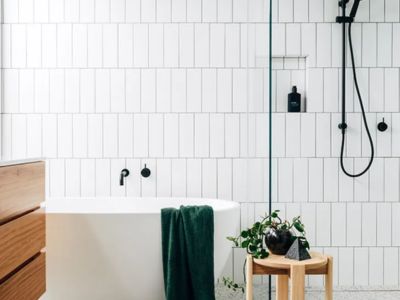
Choosing a vertical stack arrangement for subway tiles brings a trendy edge. Installing tiles vertically elongates the space and lends it a visually intriguing appeal. This gives looks from the conventional horizontal layout and injects a modern touch while preserving the inherent versatility and charm of subway tiles.
The vertical alignment creates a sense of height that makes rooms feel more expansive and dynamic. This innovative approach allows for creative experimentation in design and offers a fresh perspective on traditional tile installations.
11. Random Staggered Pattern
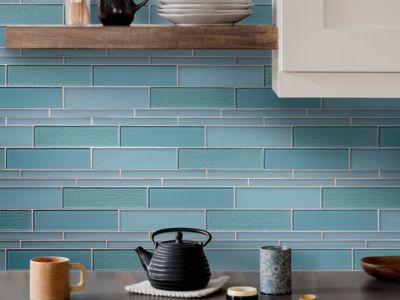
Embracing a random staggered pattern with subway tiles introduces a playful and eclectic vibe. Mixing different lengths of tiles and staggering them irregularly across the wall achieves a relaxed, organic aesthetic. This unconventional approach adds whimsy and personality to the space for inviting creativity and individuality.
The result is a dynamic and visually captivating tile layout. It inspires the room with character and creativity. The spontaneous arrangement breaks away from traditional norms and offers a refreshing interpretation of tile design. This versatile style adapts well to diverse interiors and exterior applications. Therefore, it is a delightful choice for those seeking a minimalist atmosphere.
Wrap Up
Metro tiles can be installed in a plethora of creative patterns to make your space stand out from the rest. Their mesmerizing beauty can bring a charming and captivating appeal to any room. However, choosing the right installation pattern is crucial for perfect decor. So consider your requirements and measure the available space, then compare different designs according to your taste and budget. If you're unsure, seek a consultation from an interior designer.
